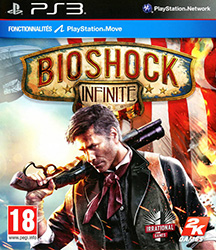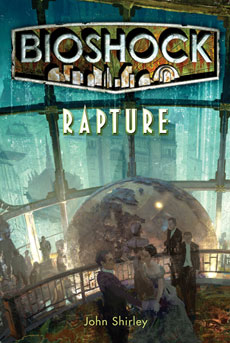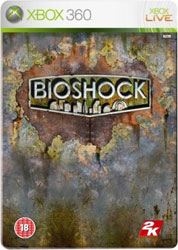Now this is a one-time-only thing, because although this is an important argument in a sense, it’s one that I’m sick to death of hearing about. Someone says otherwise, gamers variously trumpet the likes of Ico or flame the person in question, and then we repeat the whole thing again a few weeks later. Roger Ebert has done it again, with the prominent movie critic reiterating his stance that games can never be art. Some points I agree with, some I disagree with, and some of his statements are factually wrong; gamers’ responses have ranged from decent to predictably defensive and/or vitriolic.
So, are games art?
Yes.
Any creative product is art, be it a film, a game, a painting, a sculpture, a novel, a poem, a play, or anything else. As far as I’m concerned, this is indisputably true, and if I could quite happily leave the argument there.
The difference comes in artistic merit. The Mona Lisa, Michelangelo’s David and the doodle on the back of my notebook are all art, but no one’s going to argue that the former two are worth far more, both monetarily and in every other sense. Likewise, Citizen Kane and 2001: A Space Odyssey are both far more worthy than Transformers: Revenge of the Fallen, but all three are art in some sense. Creating art is one of the primary motivating factors to all but the most commercial of filmmakers, and as a result there are a lot of films with artistic merit.
Artistic merit is where gaming can fall short, because it’s still treated as a commodity, an industry driven by sequels and following the leader. Shadow of the Colossus, Katamari Damacy, Okami, BioShock and Grim Fandango are examples of games that I would consider to be artistically important for various reasons, while I couldn’t say the same for FIFA or the latest movie-licensed game. FIFA is art, but I’d never show it to someone to show them what the medium can do beyond be a fun way to spend a couple of hours.
My personal opinion is that part of the problem is that there aren’t enough gaming auteurs. Too many are designed by committee and marketing departments, and while I could reel off dozens of great directors, authors or musicians from the last 30 years who have created true art within their media, there still aren’t that many in gaming. Miyamoto and Kojima are two who can be assured top billing and have the clout to get their pet projects made on their name alone, but beyond them you’re probably going to be struggling already, and knowledge of them outside those who follow the industry is almost nil. There’s also very little opportunity for people with big ideas to get their game through development and then into gamers’ hands through commercial channels, with the indie art project games usually either curiosities on the PC or, at best, a sleeper hit on the iPhone.
I’d almost say that the early arcade games did a better job of being artistic in their own right, because they were gaming in its purest form – interactive art, often made by a handful of people. Things like Electroplankton are their direct descendants.
I’m sorry if this seems like doom and gloom, but we have to remember that gaming is a young medium. It’s only 15 years or so that it’s been able to tackle the bigger issues by presenting us with something beyond bleeps and bloops – although my previous point on the artistic merit of those stands – and those gaming auteurs are starting to emerge, however slowly. Film wasn’t taken seriously as anything more than a technical gimmick at the beginning, and rock music was once the downfall of civilisation that games now are.
When today’s gamers are tomorrow’s art critics and we have more developers whose body of work is big and pretentious enough to be called an oeuvre, and maybe when you can make a go at getting an independent game on the shelf next to the new Call of Duty, then we’ll be the ones complaining that this new-fangled holographic VR nonsense isn’t art. That’ll show ’em.
 I take it as an indication of the quality of 2013’s games that BioShock Infinite, a game that seemed a shoo-in for copious awards come this point in the year, now looks likely to be frequently overlooked. I’m kind of the same now that the lustre has worn off and the rough edges – prosaic shooting, an occasionally annoying AI companion, bullet sponge enemies, that boss – have become evident.
I take it as an indication of the quality of 2013’s games that BioShock Infinite, a game that seemed a shoo-in for copious awards come this point in the year, now looks likely to be frequently overlooked. I’m kind of the same now that the lustre has worn off and the rough edges – prosaic shooting, an occasionally annoying AI companion, bullet sponge enemies, that boss – have become evident.
 Tasked with lifting a story saddled with Ayn Rand philosophy above the levels of mediocrity that many videogame tie-in novels can only hope to achieve, it’s hard to believe that John Shirley had a chance.
Tasked with lifting a story saddled with Ayn Rand philosophy above the levels of mediocrity that many videogame tie-in novels can only hope to achieve, it’s hard to believe that John Shirley had a chance.